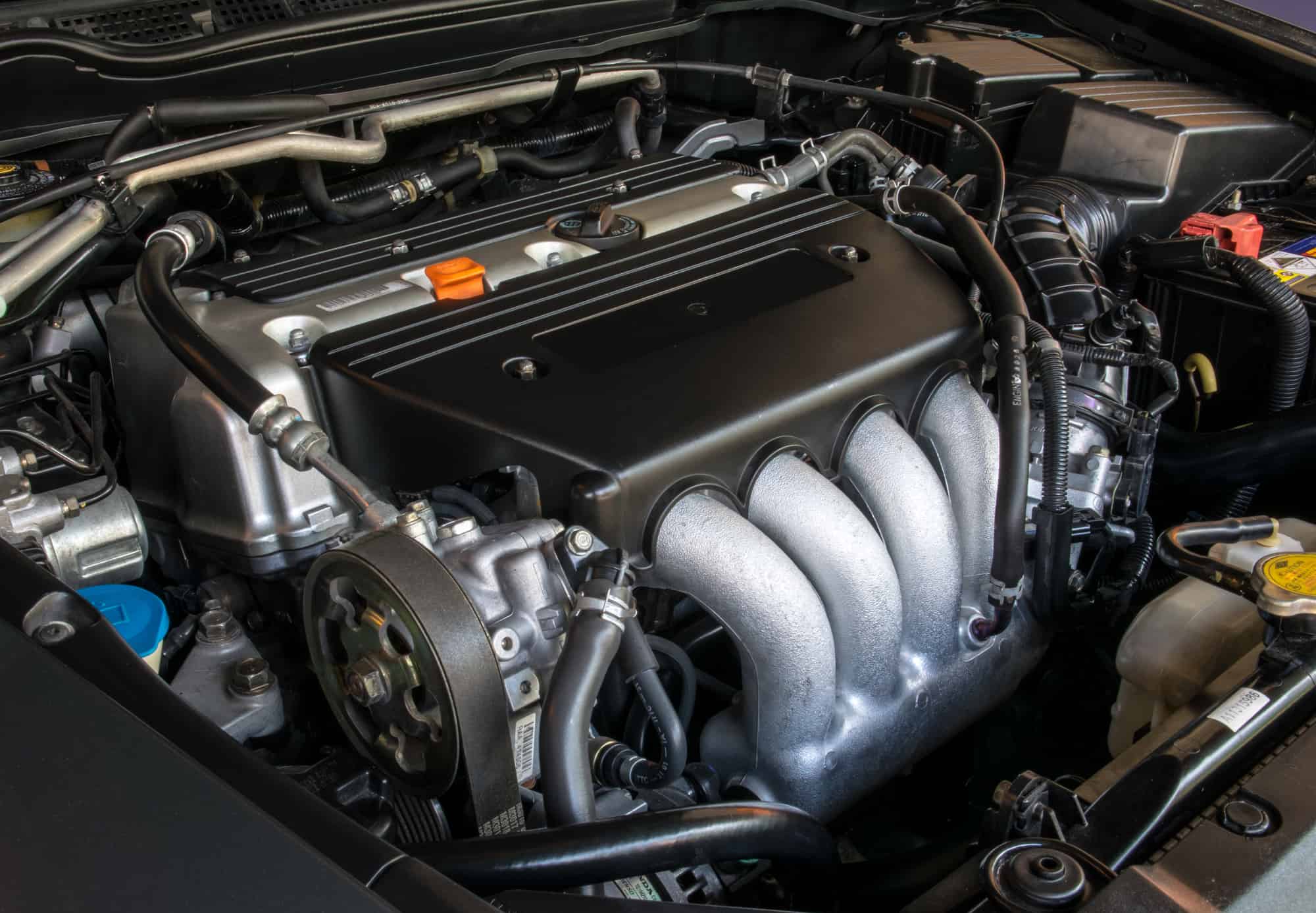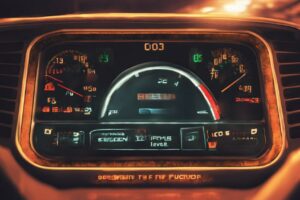As a general rule, if your car is sluggish to start when it is hot, it is usually caused by a problem with one of the following; the starter motor, the battery, the battery cables or the engine coolant temperature sensor.
The engine and its auxiliary components are designed to operate across a range of temperatures. It’s not uncommon for a cold car to struggle when starting and this is fairly easy to troubleshoot.
If however, your vehicle is struggling to start when it is hot, the source of the problem can be more difficult to pinpoint if you don’t know where to start.
As an Amazon Associate we earn from qualifying purchases.
5 reasons why your car is sluggish to start when it’s hot
If your vehicle is struggling to start again after you have driven it, the most obvious thing to check first is the battery. Modern batteries should be able to restart a car multiple times without being recharged fully. So if you start your car and drive a short distance then you should have no problem restarting it, assuming the battery is in good condition.
However, most of the time the problem is not with the battery, especially if it is an older, higher mileage vehicle.
Some older vehicles can struggle to restart after they have been driven and have warmed up. This problem is usually unique to higher mileage vehicles because, over time, electrical components and wiring can become less capable of operating and carrying electrical current when they are hot.
Here are a few of the most common reasons why your car is slow to start when it is warm.
Reason 1. A bad starter motor
The most common reason for your car to struggle when starting hot is because of a bad starter motor.
The starter motor is usually buried deep within the engine bay, bolted to the engine block where it must tolerate extreme heat. This heat will eventually have a negative impact on the starter motor, as it dries out the internal lubricants that help to keep the starter motor operating reliably. Over time, the components within the starter can corrode because of a loss of lubrication and grease.
The starter motor works by powering the starter solenoid allowing it to generate a magnetic field. This magnetic force moves the inner core and closes the contacts that power the high-current switch, thus engaging the starter motor with the flywheel and generating enough force to start the engine.
If the inside of the starter motor is dried out and sticky, then the starter solenoid may not be able to easily activate the starter and move the bendix so that it engages with the flywheel. This can then prove to be more difficult when the starter is hot and its internal components have expanded.
Reason 2. A bad battery
Another common cause of a car that won’t easily restart when hot, is a bad battery. Modern batteries usually have a high cold cranking amperage available to start the engine. There is usually enough power in a fully charged battery to restart a car multiple times without recharging it.
If however, the battery is not charging properly when the vehicle is driven, then it will be difficult to restart the engine. This usually has less to do with the car being hot and more to do with the battery not holding a charge or recharging fully.
It may appear that the problem starting the car is related to it being warmed up, when in fact it is just a battery that is no longer powerful enough to restart the engine.
Reason 3. Worn battery cables
Worn battery cables can also make a car difficult to start. The cable that runs from the car battery to the starter motor can become worn and brittle if it has been exposed to extreme temperature fluctuations.
Worn battery cables will have a higher-than-normal internal resistance, causing them to heat up when in use. This means that they won’t be able to carry the same level of current as new cables and this can affect the amount of power getting to the starter motor.
Worn cables can also affect the power getting from the alternator to the battery, resulting in a weaker battery that may not fully recharge as quickly. In general, battery cables should not wear out over time. It usually only happens if they have been allowed to get too hot on a regular basis. This can happen if there are voltage spikes caused by loose connections or if the cables are overloaded because of extra power loads.
Reason 4. Low voltage at the starter motor
A very common problem when it comes to starting a hot car is a lack of power getting to the starter motor. This can happen if the cables feeding power to the starter motor become hard and brittle. Battery cables that have high resistance, will not be able to carry as much power as they should and this resistance will increase further when the engine is warm.
A decrease in voltage is the same as having a weak battery, and it will usually result in the starter motor not getting enough power to start the engine. This is because there will be a noticeable drop in potential difference (voltage) between the battery terminals and the positive connection on the starter motor due to the resistance in the cables.
The power cable that feeds the starter motor is continuously exposed to high temperatures and this can cause it to harden. Large temperature fluctuations can also affect the connection terminals, causing them to loosen and corrode. This will also affect power and can result in intermittent starting problems when the engine is hot.
Reason 5. Faulty Engine temperature sensor
Sometimes the reason why an engine won’t start when it is hot is because of a faulty engine temperature sensor. The ECU keeps track of the engine temperature by monitoring the temperature of the engine coolant. Most cars have an engine coolant temperature sensor fitted somewhere near the engine thermostat, and this can provide real-time temperature information to the ECU.
The ECU then uses this information to adjust the fuel delivery among other things, so that the engine runs smoothly when cold and when it has warmed up. If the coolant temperature sensor is faulty, then the ECU can’t keep track of the engine temperature. If the engine has warmed up but the ECU still thinks that it is cold, then the engine will more than likely be running rich.
Fuel tends to be less vaporized when hot, and burns a lot easier than cold fuel, therefore less is needed once the engine gets up to operating temperature. Too much fuel will make a hot engine more difficult to start, and this can cause the engine to flood and cut out.
What Next – How To fix a car that is sluggish to start when hot
Most of the time, if your car won’t start when it’s hot, the problem can be traced back to the vehicle’s electrics. It’s usually a problem with the battery, one or more engine sensors, the wiring, or the starter motor. Here are a few things you should check to help find the cause of the problem.
1. Run an OBD diagnostic for engine error codes
I always start by running a diagnostic. If it throws up any error codes, then this can help to direct you to the source of the problem without having to pull apart the engine searching for loose connections or bad wiring. Common error codes that may affect starting the engine include:
- P0118 – Engine Coolant Temperature Circuit – High Input malfunction
- P0562 – System Voltage Low
- B1363 – Ignition Start Circuit Failure
- P0616 – Starter Relay Circuit
- P0512 – Starter Request Circuit
2. check the battery condition
Another easy test is to check the condition of the battery. Using a multimeter or battery checker, ensure that the voltage is at least 12V and ideally 12.6V with the engine turned off. If it is less than 12 V then the engine is going to struggle to start, less than 11.5V and it probably won’t start at all.
If the voltage is fine and the battery appears to be fully charged, then check that the battery cables are connected tightly to the battery and that the connections are clean and free from corrosion. Ensure that the cables are clean and free from damage and that the battery is not damaged and does not have any bulges or fluid leaking from it.
3. check cable connections on the starter motor
Locate the starter motor and inspect it visually for excessive dirt or corrosion. Ensure that the outer sheath on the power cables from the battery is clean and is not damaged or melted. Check that the connections are tight, clean, and free from corrosion. Ensure that the grounding cable is not damaged and the connection to the body of the starter motor is tight and clean.
4. Check the voltage at the battery and starter motor
Take another voltage reading across the battery terminals and compare this to a voltage reading at the starter motor. To get an accurate reading of the starter motor, place one tip of the multimeter on the positive connection on the base of the starter motor and then ground it against the subframe of the vehicle. (Scrape away a small amount of paint from the subframe to ensure you make a good connection).
If the voltage at the starter motor is noticeably lower than at the battery, then there is a problem with the wiring from the battery to the starter motor. This is a common problem with older wiring, and the decrease in conduction gets worse when the wiring is hot.
5. Remove the starter motor for testing
If everything else checks out and there are no error codes stored in the ECU then I’d recommend removing the starter motor for bench testing. If you have a spare starter motor available then fitting it might be a good way of testing if the existing starter is faulty.
As an Amazon Associate we earn from qualifying purchases.































Given my car’s recent struggles with starting in heat, and considering the complexity of diagnosing it myself, would having a professional mechanic run a diagnostic be a more effective first step, or should I attempt some of the simpler checks myself first?
Is there a way to test the engine coolant temperature sensor at home before deciding to replace it?